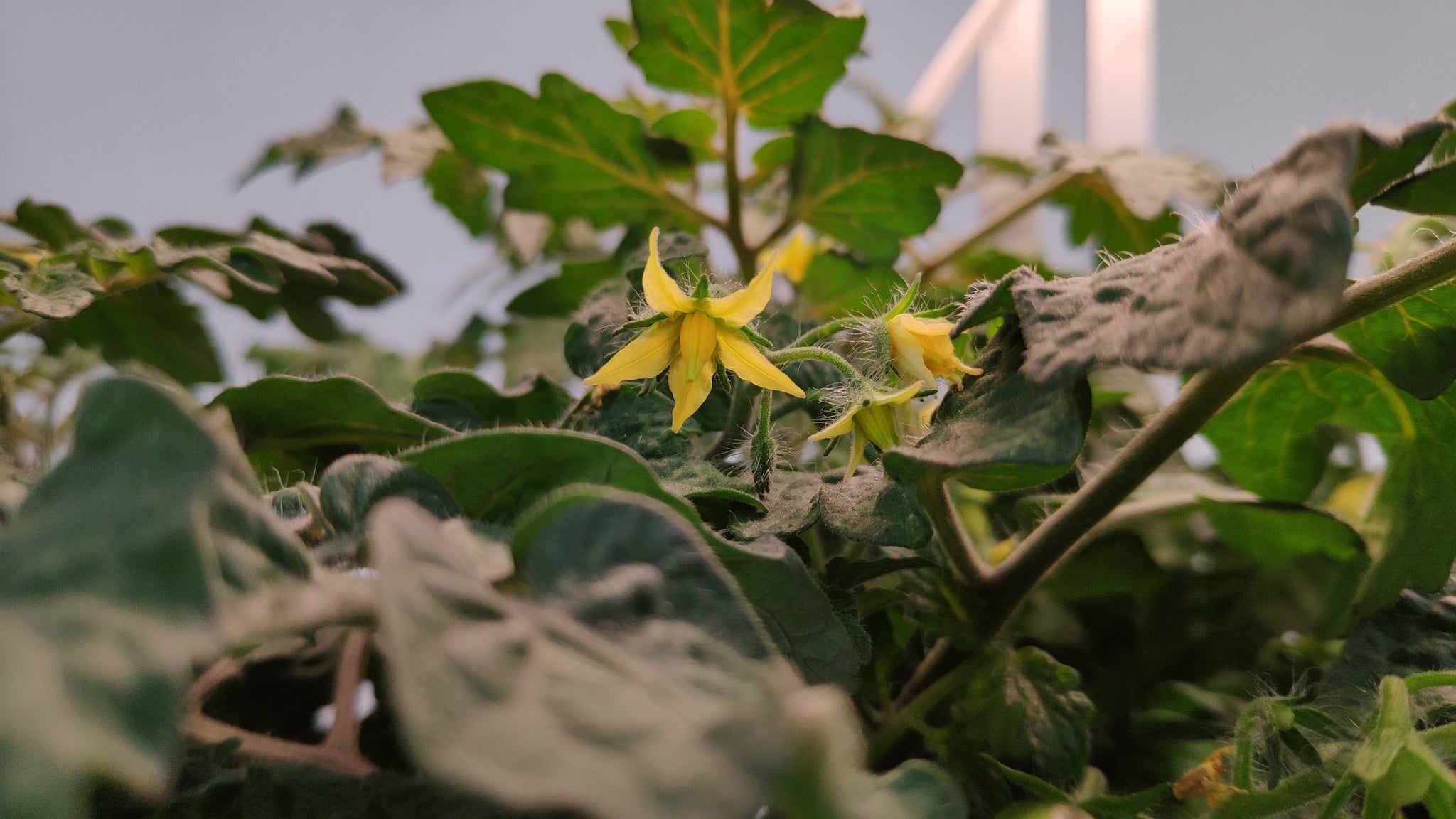How to pollinate tomatoes and peppers?
Unpollinated flowers simply fall off the plants without setting fruit, and failure to pollinate is one of the greatest causes of disappointment in growing tomato and pepper plants.
Many plants, including tomatoes, peppers, cucumbers and melons require pollination in order to produce fruit. When growing outdoors, this critical step is performed by wind, animals, bees and other insects. When growing indoors, we need to “be the bee” and perform this task ourselves if we want to enjoy those vine-ripened tomatoes in the middle of winter.
And when do I need to pollinate?You should pollinate when you have more than 3 flowers so that you can go from flower to flower. When a flower fully opens and the petals starts to fold back, the pollen is at its healthiest. |
What frequency should I be pollinating my plants?You should pollinate your plant once a week to give it time to form new flowers, pollen to mature, and fertilization to set in. |
Pollinating Tomatoes, Peppers and EggplantsWith tomatoes, peppers and eggplants, pollination is fairly simple and can be accomplished in a variety of methods, including:
|
Pollinating Cucumbers, Melons and SquashWith plants that have male and female flowers, we need to move the pollen from the male flowers to the female flowers. Many plants will produce a large amount of male flowers first, then the female flowers start to appear. You can tell the difference between male and female flowers by studying them closely. Male flowers are smaller and you can often see the pollen as “dust” inside the flowers. |
Top Tips for Pollinating Plants:
- Most of our plants are self-pollinating and do not need intervention unless you want to increase yield, or are not seeing fruits form. Only cucumbers, tomatoes, and peppers should be pollinated by hand. Our other varieties are able to use the gentle breeze in your home to pollinate themselves.
- When pollinating cucumbers, make sure you are going from male to female flowers. Female flowers look like they have a baby cucumber on them.
- You cannot cross-pollinate crops, so make sure you only pollinate tomatoes with tomatoes and even stay within the same variety. This means that you should not pollinate a snackable red pepper with the pollen from a Hot Lemon Pepper flower.
- If you place a spoon under your flowers while you pollinate, you can catch extra pollen that would have come off. You can then dip into your spoon as you go from flower to flower.



















